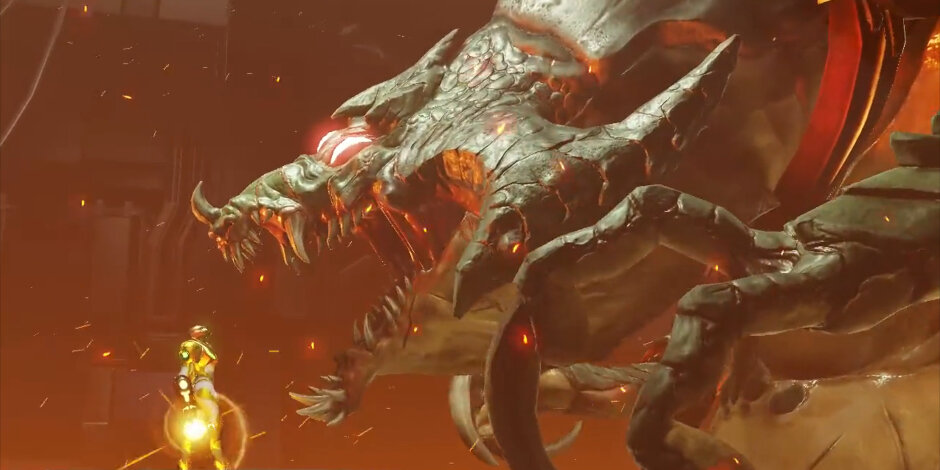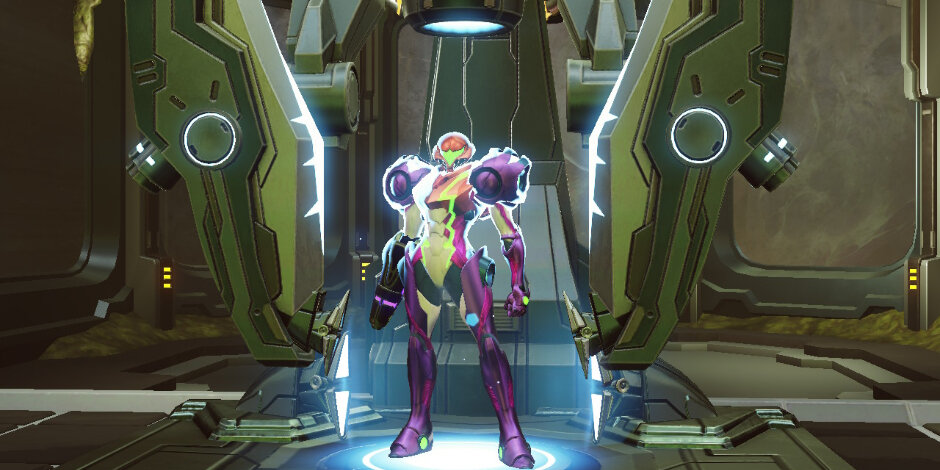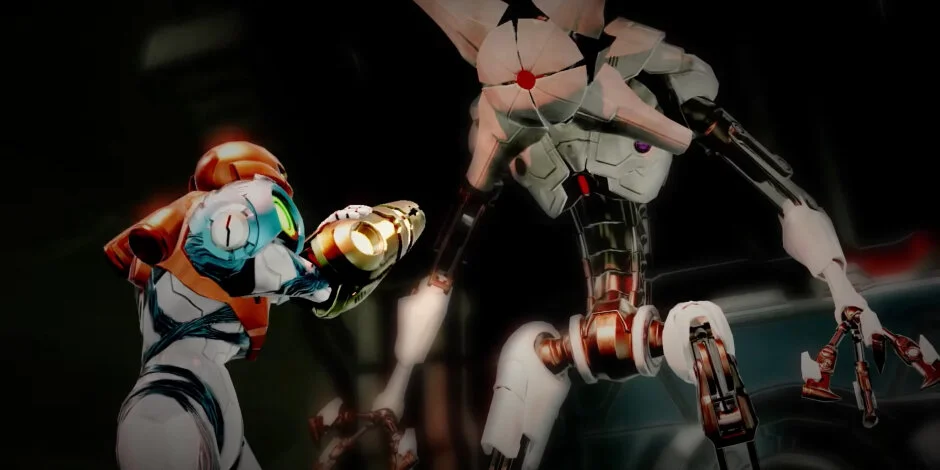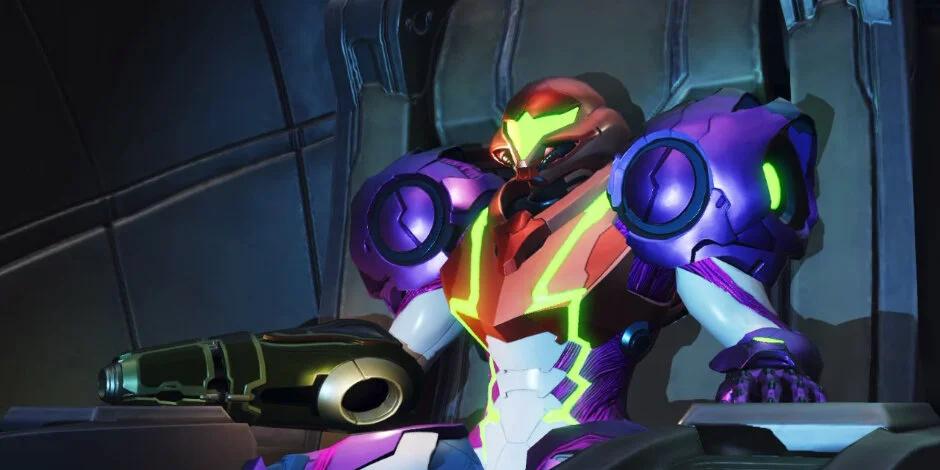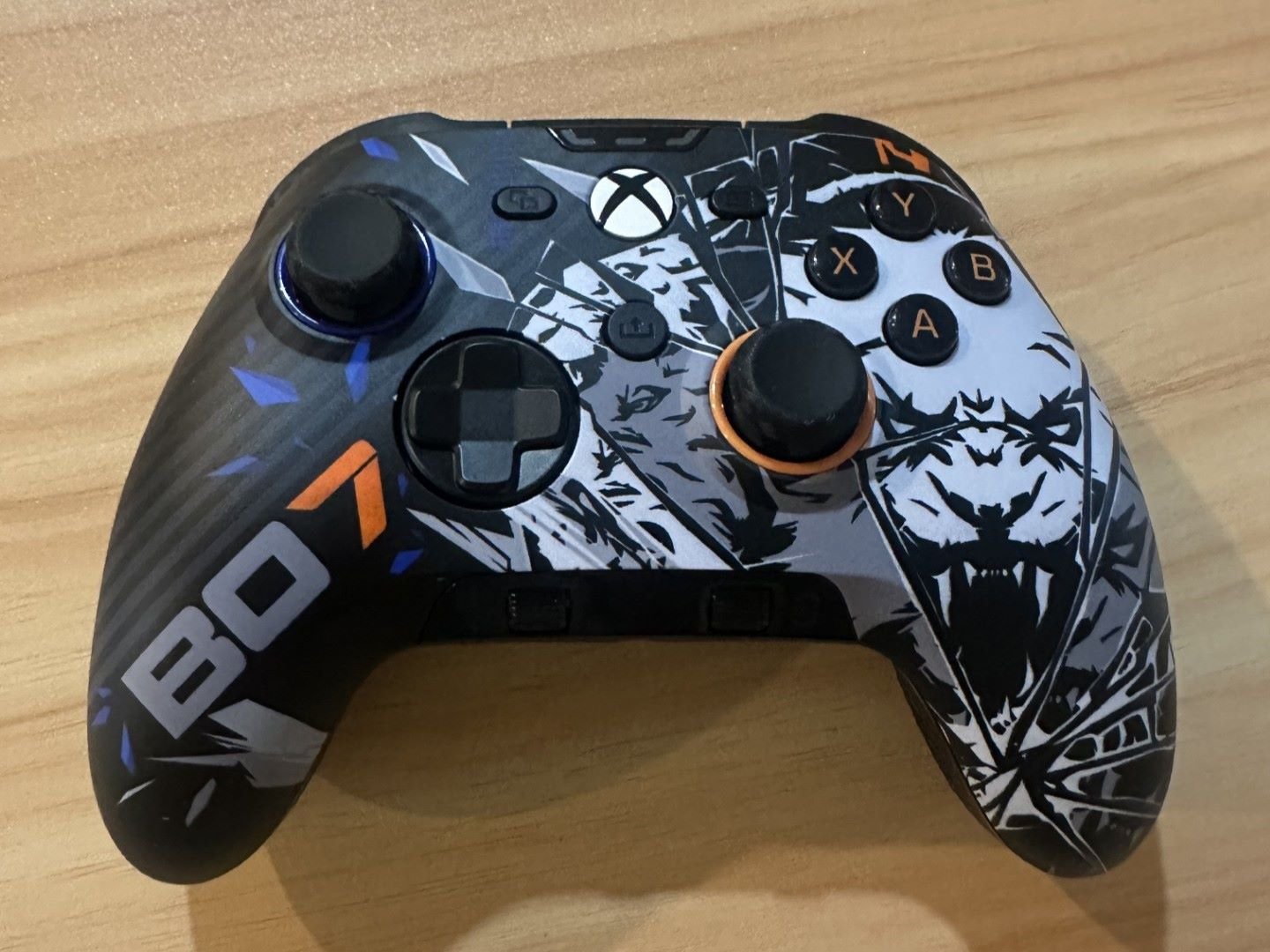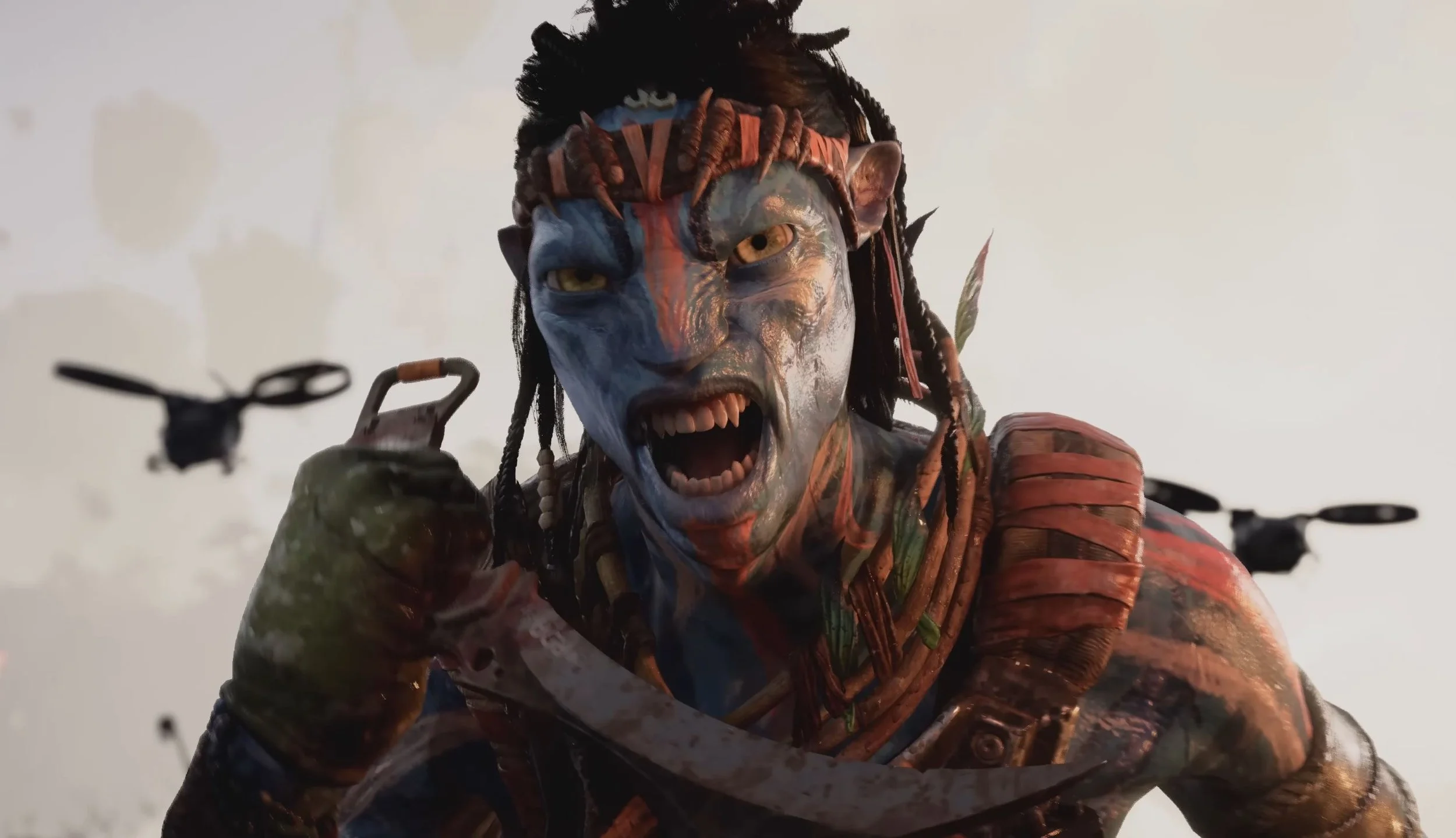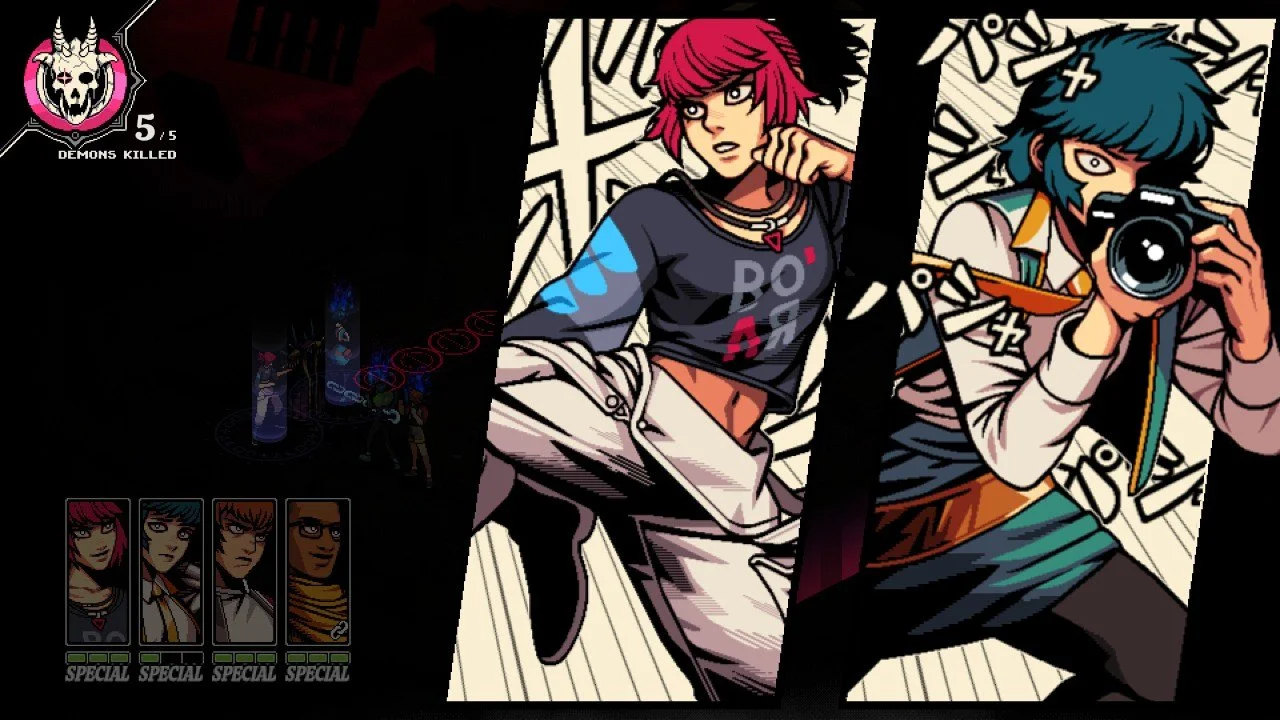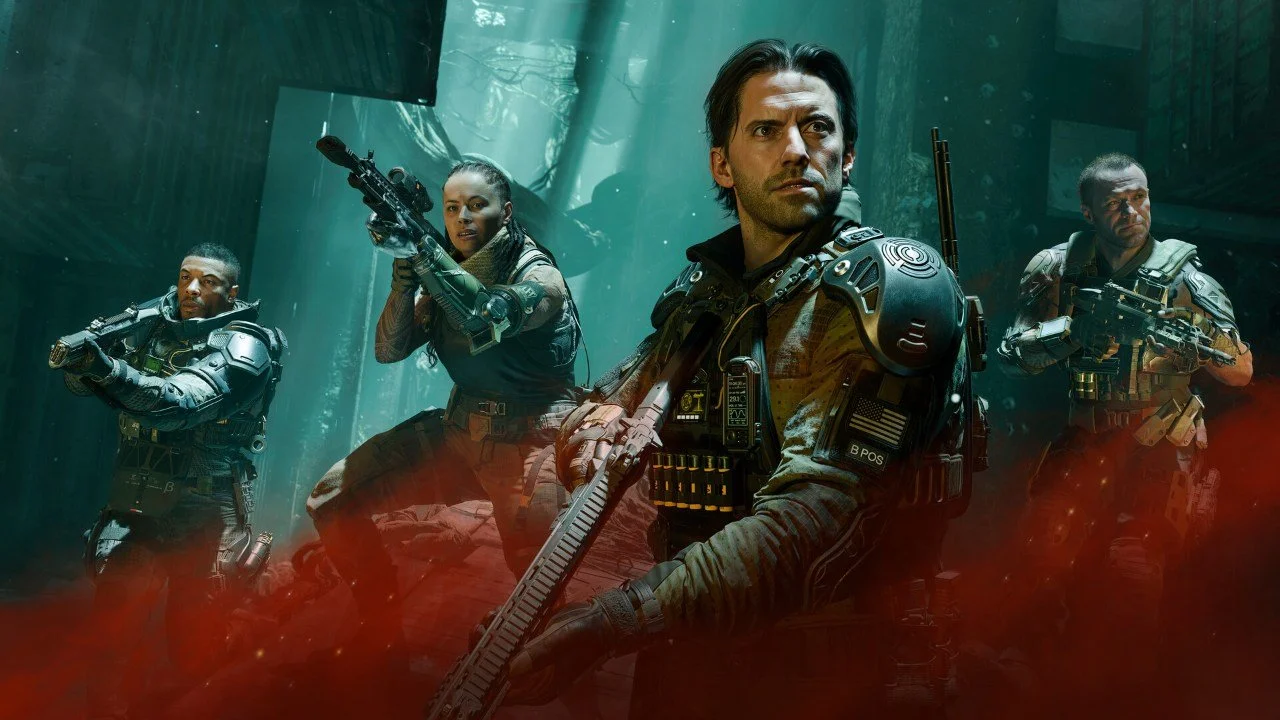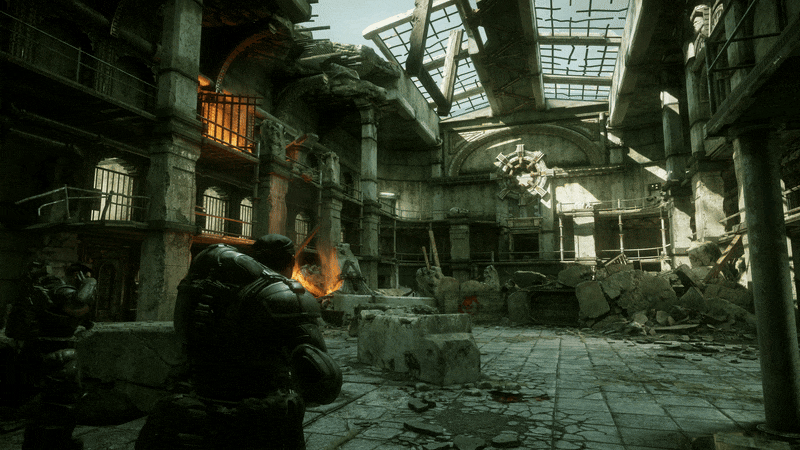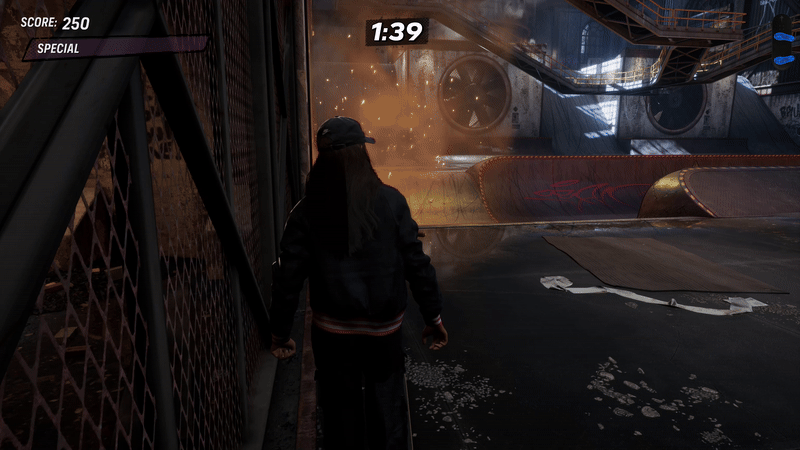The Metroid series is one of the more eclectic franchises Nintendo has published. While the series has seen many spinoffs and remakes, there hasn’t been a true continuation of the overarching narrative in almost 20 years. That is until Metroid Dread was released on October 8th, 2021.
MercurySteam, the developer of Metroid: Samus Returns, is back with this newest release, and they’ve crafted a wonderful, challenging sequel that pays homage to all the best elements of Metroid. At once satisfying and frustrating, Metroid Dread marks a bombastic return for one of gaming’s foundational franchises.
Story
Dread picks up shortly after the events of Metroid Fusion, the last game in the series chronology, and hits the ground running. In an effort to wipe out all remaining traces of an alien parasite known as X, the Galactic Federation dispatch a team of advanced robots to the planet ZDR. When the robots stop reporting back, the Federation calls on Samus Aran to investigate.
Dread paces out its story well, even if functionally it’s a bit thin. Most of the narrative is delivered through conversations with Samus’ ship computer at pitstops dotted throughout the levels, which helps to keep the momentum of exploration. A few cutscenes do the heavy lifting, plot-wise, but they also help to cement Samus as one of the coolest characters in all of gaming.
The story is a strong conclusion to the Metroid saga and one that longtime fans of the franchise will be more than happy to get their hands on. However, though it offers a recap for new players, the big revelation and twist finale definitely won’t hit as hard for anyone not already steeped in Metroid lore.
Gameplay
There’s a reason that an entire genre of video games is partly named after Metroid, and Metroid Dread proves that the namesake is still the king. Metroid Dread is a masterclass in level design that hides secrets and shortcuts around every turn.
As with most Metroid games, Dread strips Samus of most of her special abilities and leaves her stranded deep within the bowels of a strange world. The goal is to regain each of her powers as she explores the planet, slowly accumulating everything she’ll need to reach the surface and escape on her ship.
Each new power unlocks new areas to explore and upgrades to find, whether that’s a missile tank upgrade or a new suit that makes Samus immune to extreme temperatures. The loop is simple but no less satisfying as a result: new abilities open up new paths that hide more abilities that allow for even further progression.
It’s a testament to MercurySteam’s development ability that it all still feels fresh even after hours of gameplay. New abilities dramatically shake up the flow of exploration, bringing depth to each location. Samus truly feels like she’s evolving over the course of the game as she adds new elements to her suit that visibly change its design.
Combat is also a delight, leveraging the robust suite of tools Samus has on offer to provide a wide variety of take-down techniques. While she always has her trusty arm cannon on hand, certain enemy types require a bit more finesse to eliminate completely.
It helps that just about every ability Samus unearths on her journey has a specific use in combat, e.g. the Spark Jump taking out electricity-infused enemies with a single hit. That said, I found some abilities became a bit redundant in the game’s back-half.
Combat against the run-of-the-mill enemies scattered around each level functions as a sort of testing ground for Dread’s highlight: the boss battles. Many of these bosses are larger than life, practically filling the screen with their bulk and taking huge chunks of health with each attack. Learning their attack patterns is half the battle, so be prepared to play through each boss more than once.
The most satisfying moment in any boss battle is countering an attack, which opens them up for an awesome reprisal that gives Samus an opening to lay into them with a devastating salvo. These battles are skill checks, testing both weapons mastery and maneuverability.
And if the boss battles are skill checks, the EMMI encounters are on a level all their own. The EMMIs are the Mr. X of Metroid Dread, pursuing Samus relentlessly and killing her in a single stroke. Avoiding them was one of the most frustrating and exhilarating parts of the game, and Dread felt a bit empty once I’d taken them all out.
Some of the most incredible moments in the game happen during these encounters, with last-second dodges to hitting their incredibly difficult counter window and stunning them for a moment. The EMMIs challenged me to learn every single nook and cranny of a level, enhancing the game’s brilliant environmental design.
The only downside is that, because of this difficulty, the EMMIs can be intensely frustrating. One late-game EMMI was downright aggravating as it could sense my presence from anywhere in its area. This turned the entire encounter into a mad dash that didn’t feel quite as satisfying as sneaking past the other robots.
Audio & Visual
Metroid Dread has an excellent environmental sound design that fills the world with captivating noise. Everything from a door opening to Samus’s cannon firing has a distinct and satisfying aural quality that immersed me in its world from the very start.
Enemies will make different noises depending on how they’re attacking or how they’re moving, and even the sound of Samus picking up consumables has a ring to it that evokes the game’s science fiction setting.
Where the sound design truly excels though is during the EMMI encounters. The music changes subtly, settling into a steady thrum that spikes to a heart-pounding horror score when the EMMI is giving chase. The EMMIs themselves give off a chilling, robotic chirp while they’re in the same room as Samus, which serves the dual purpose of instilling a sense of dread while also providing the player with information on the EMMI’s proximity.
The visuals are no less impressive, boasting gorgeous character models and some of the best cutscenes I’ve ever seen on the Nintendo Switch. The game overall looks great, making the most of its 2D structure to craft rich background environments, but the cutscenes are jaw-dropping.
Whether Samus is facing off against a longtime nemesis or simply emerging from a save station, the bounty hunter has never looked cooler. She oozes confidence and backs it up with awesome acrobatics and gunplay that should cement her as one of gaming’s coolest heroes.
What Could Be Better
Metroid Dread is a finely polished release that runs well and feels great to play. However, its staggering difficulty when confronting both bosses and EMMIs will no doubt turn many Switch owners away, especially those with disabilities. Including a better slate of accessibility options and an easier game mode would go a long way to allowing more people to enjoy Dread.
Adding these options doesn’t hurt the game or change the experience for anyone who is looking for that challenge. Beating the game unlocks a Hard Mode, so increasing the difficulty is always an option. But giving more people the chance to play the game is always better, and more people really should have the opportunity to play this game.
Verdict
Metroid Dread is the Metroid game fans have been waiting years to play, and it does not disappoint! It is the perfect distillation of that classic formula, for better or worse, and feels like both an homage and a new beginning. While its difficulty can sometimes be aggravating, in the end, it’s a wonderful, worthwhile experience that longtime players and newbies can both enjoy.
